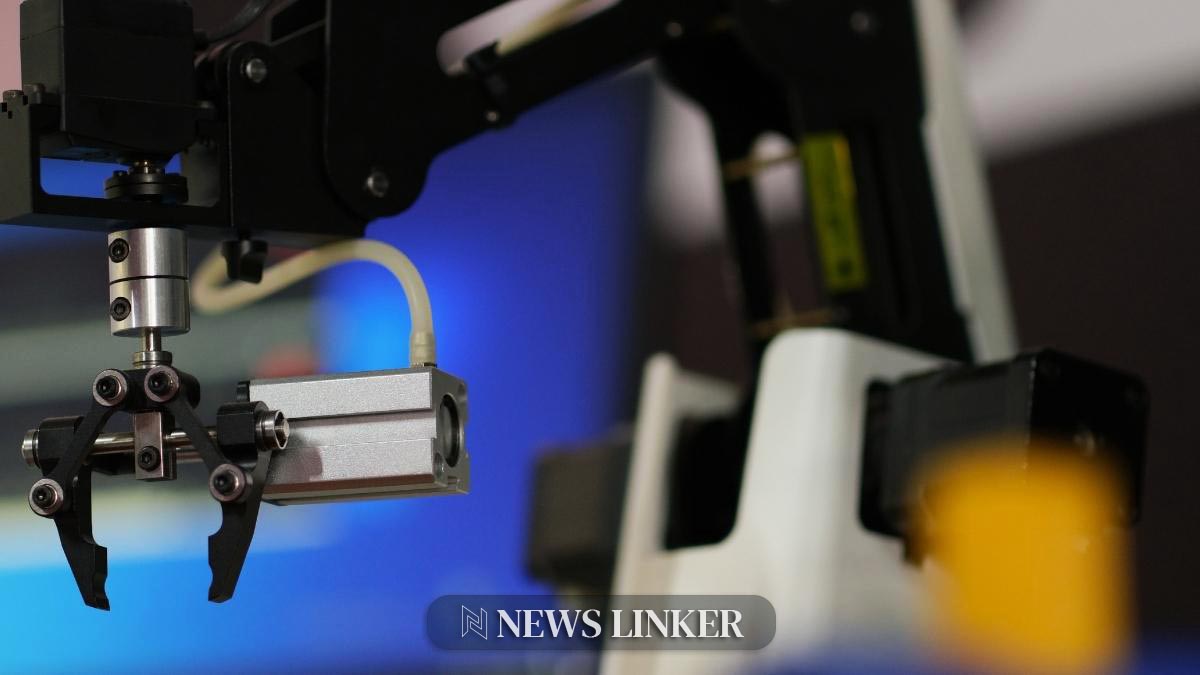Robotics and artificial intelligence (AI) are crucial in today’s technological landscape, offering unparalleled efficiency and safety benefits. You can also take a look at these articles, What is Robotics? and Artificial Intelligence. Robots, capable of operating in hazardous environments, perform tasks like heavy lifting and repetitive duties, safeguarding human workers from dangerous jobs. Companies investing in human-machine collaboration are seeing substantial financial gains, as robots augment human capabilities, not replace them. For example, analyzing vast NFL video archives becomes feasible with AI, demonstrating robotics’ potential in data processing and analysis.
Robotics, the science of designing and operating robots, has evolved from simple mechanical constructs to advanced, AI-integrated machines. These robots now perform complex tasks with minimal human intervention, thanks to AI’s ability to process data, learn, and make decisions. This convergence of robotics and AI is shaping a future where robots assist in various sectors like manufacturing, healthcare, and domestic settings, enhancing productivity and safety.
AI and robotics complement each other, with AI providing cognitive abilities and robotics offering physical interaction. Their synergy is evident in various fields, from manufacturing and medicine to social care and space exploration. In manufacturing, robots increase efficiency and safety, while in medicine, they assist in complex surgeries. In social care, robots aid the elderly and disabled, and in space, they enable exploration and maintenance.
The integration of space technology with robotics, such as Earth Observation (EO) and Satellite Communications (Satcom), adds value by providing critical data for navigation and communication. Robotics in extreme environments, agriculture, infrastructure monitoring, and transport demonstrate this technology’s transformative impact.
Do Humans Need Robots?
Robots, increasingly integrated with artificial intelligence (AI), play a pivotal role in modern society, particularly in performing tasks too hazardous or mundane for humans. They excel in environments where handling heavy loads, toxic substances, or repetitive tasks is required. The evolution of robotics aims to create human-like, or humanoid, robots, designed to operate in human spaces rather than replicate human appearance. For instance, Agility Robotics’ Digit, a robot not designed to look human, is being tested by Amazon for storage work due to its ability to pick up and move objects effectively.
Humanoid robots like Figure AI’s Figure 01 are developed to function in human-centric environments, indicating a shift towards robots that can perform multiple tasks. This development responds to the labor shortage in various sectors. Tesla’s Optimus and other humanoid robots like Apptronik’s Apollo also exemplify this trend.
The goal isn’t merely to replicate human form but to develop robots that can complement and augment human work, especially in areas like manufacturing, healthcare, and domestic settings. These robots are seen not just as tools but as integral parts of human life, addressing labor shortages and performing tasks that enhance efficiency and safety. The adoption of such robots signals a future where human-centric robots become commonplace, assisting in various aspects of life and work.
Are Robots Good or Bad?
Robots are a double-edged sword in modern society. On one hand, they promise enhanced economic growth, productivity, and new job opportunities globally. They excel in tasks that are repetitive, precise, and hazardous, where human safety is a concern, such as in nuclear or chemical industries. Robots don’t require human-like working conditions and possess capabilities beyond human abilities.
However, the rapid rise of robotics also brings significant drawbacks. The increasing use of robots could lead to substantial job losses, with predictions of 20 million manufacturing jobs lost by 2030. They lack the improvisational skills and dexterity of humans and can’t operate beyond their programmed capabilities, necessitating strict safety protocols. Moreover, robots entail high initial costs, maintenance, and programming.

While robots can operate in human environments and assist in daily tasks, their advancement raises concerns about the displacement of human workers and economic challenges. The debate over their utility is complex: robots enhance productivity and quality in many sectors, yet the potential for negative impacts on employment and wages is significant. The future of robotics is intertwined with these benefits and challenges, making their role in society a subject of ongoing discussion and careful consideration.
Will Robots Replace Humans?
Robots and AI are transforming the labor market, enhancing efficiency and productivity, yet they are not poised to completely replace humans. Key reasons include AI’s lack of emotional intelligence, crucial for human interaction and client relationships, and its reliance on input data, limiting its adaptability in unforeseen situations. AI’s creative process is confined to available data, lacking the human capacity for innovation and out-of-the-box thinking. While AI lacks soft skills essential in the workspace, humans are indispensable in making AI work, as they design, program, and maintain these systems.
Additionally, AI is intended to complement, not compete with, human abilities, automating repetitive tasks while creating new job opportunities. Despite AI’s rapid growth, it requires fact-checking and cannot perform manual labor, limiting its scope. The debate on technological unemployment reveals that while some jobs are lost to automation, many new ones are created, emphasizing the need for upskilling and training. Ultimately, robots and AI will coexist with humans, enhancing capabilities rather than fully replacing them in the workforce.
How Do Robots Affect Life?
Robots significantly influence various aspects of life, enhancing productivity, efficiency, and safety. They tirelessly perform repetitive tasks, increasing manufacturing and industrial output while reducing labor costs. Robots improve safety by operating in hazardous environments, thus protecting human workers. In healthcare, they assist in surgeries and patient care, offering precision and reducing human error.
Robots contribute to education through interactive learning and personalized experiences. However, their growing presence raises concerns about job displacement, as automation could replace many manual and repetitive tasks. Despite these concerns, robots also enable job creation in new technology sectors and improve work-life balance by handling mundane tasks.










